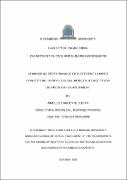| dc.description.abstract | Planning for water resources management can be supported by hydrological modeling. In a typical data scarce region, the compatibility of structures of various models with the limited data can greatly affect results of modeling. In this study, performance of six conceptual hydrological models was tested based on hydro-meteorological data from River Kafu catchment. These models included the Australian Water Balance Model (AWBM), SACRAMENTO, Soil Moisture Accounting and Routing (SMAR), TANK, SIMHYD, and Hydrological Model focusing on Sub-flows’ Variation (HMSV). The models were calibrated and validated over the periods 1952-1961 and 1962-1981, respectively. HMSV was calibrated based on conventional and case-specific frameworks for which it was hereinafter denoted as HMSV (1) and HMSV (2), respectively. Optimal parameters of each model was obtained based on automatic calibration strategy with performance assessed under both moderate and extreme hydrological conditions. Considering the full time series, the NSE values for AWBM, HMSV (1), SACRAMENTO, SIMHYD, SMAR, TANK and HMSV (2) were 0.70, 0.67, 0.35, 0.56, 0.41, 0.14, 0.53 respectively. It was found that each model performed better for high flow than low flow. Among these models, HMSV has a particular calibration framework to capture extreme hydrological conditions. To test this framework, case-specific calibration of the HMSV to capture, say, high flow or low flow, performance for extreme hydrological conditions were noted to be highly enhanced. This meant that calibration of models could be done based on a particular purpose of a study, for instance, planning of risk-based applications such as floods or drought. Under moderate hydrological conditions, the best and worst model was AWBM and SAC, respectively. For high and low flow conditions, the best model | en_US |

